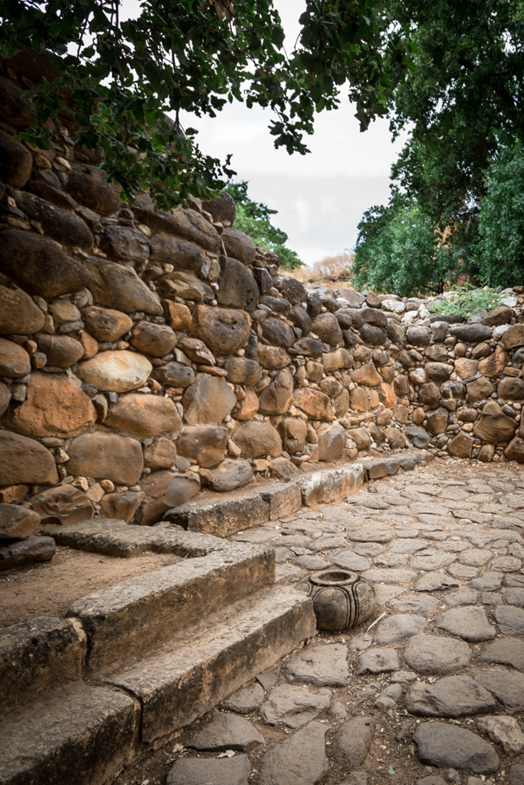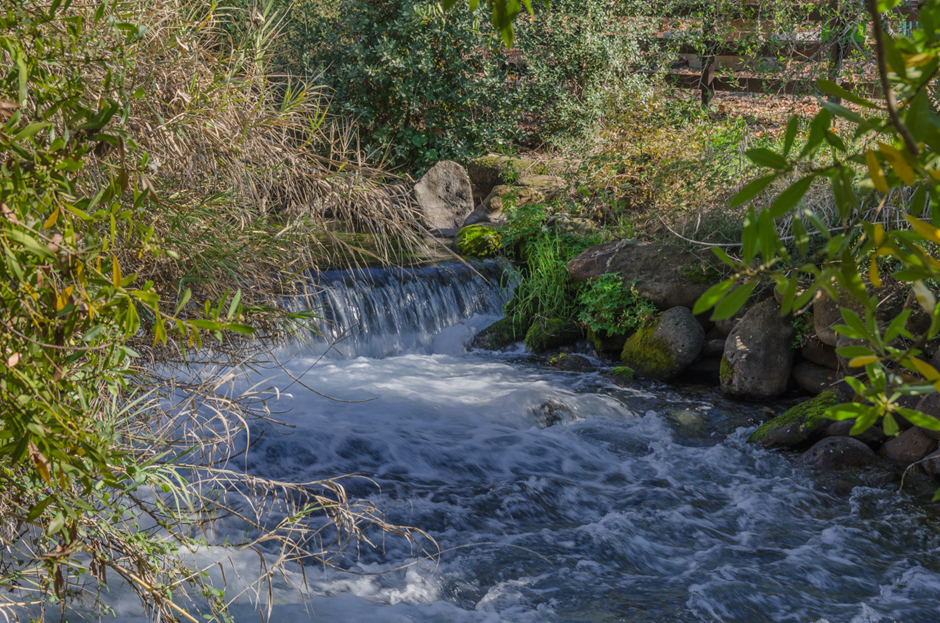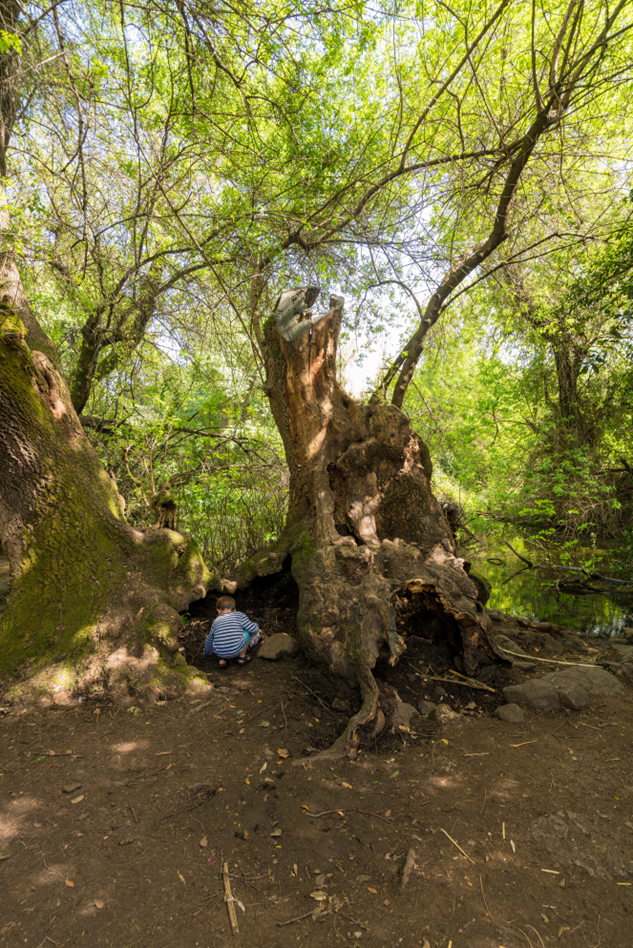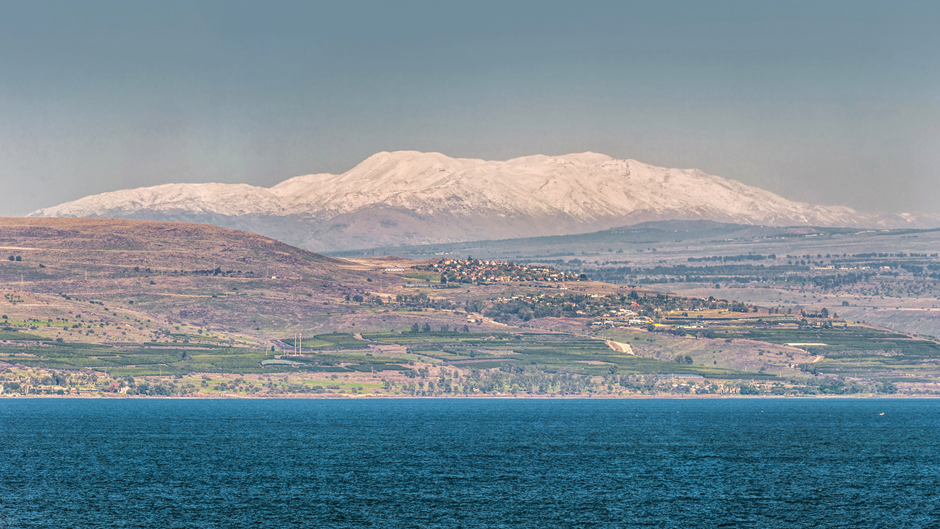“ And Abram heard that his kinsman had been taken captive, and he armed his trained men, those born in his house, three hundred and eighteen, and he pursued [them] until Dan (Genesis: 14:14).”
“ In those days the tribe of the Danites sought for themselves an inheritance (in which) to dwell… (they) journeyed from… Zorah and Eshtaol, six hundred men girded with weapons….(the inhabitants) they struck them with the edge of the sword. And the city they burnt with fire…And they called the name of the city Dan, after the name of Dan their father, who was born to Israel (Judges 18:1-29)”

Photo Credit: Shutterstock
Today we are visiting a wonderful biblical site which, in my opinion, is a contender for the title of Israel’s prettiest spot. This site boasts a perfect combination of nature, including cold water wading pools and a stunning walk through the forest alongside a gushing river. It also has well-preserved, one of a kind biblical archeology (connected to several of the Bible’s most climactic stories) and has long played a major role in the survival of the modern state of Israel. While today’s emphasis is on the biblical aspect, let us first explore the nature together!

Photo Credit: Shutterstock
Since the weather in Tel Dan is often warm, one of the highlights of visiting is the spray of the water mist, and dipping your feet into the cold, refreshing water!

Photo Credit Shutterstock
The several family friendly trails found at the nature reserve offer plenty of shade, because of the beautiful forest made up of Atlantic Pistachio, Oak, Syrian Ash, and Oriental Plane trees.

Photo Credit: Shutterstock
Now that we have a sampling of some of the natural beauty of Tel Dan, let us now discover the biblical city. In the middle Canaanite period (circa 1800 BCE) an important city developed here. Although little remains from that time period, surprisingly a large, arched gateway was discovered completely intact! Constructed of mud-bricks, the archway is considered by many to be the world’s oldest arch still intact (some say an arch from Ashkelon may be the same age or older).

Photo Credit: Shutterstock
The first mention of Dan is connected with a dramatic biblical event that can accurately be called the “First World War”. Five local city state (Canaanite) kings, including the rulers of Sodom (for more on that site, click here) and Gomorrah decided to rebel against their overlords (four powerful Kings of empires, including the ruler of Babylonia). The four kings sent their troops to Israel, subdued the armies of the 5 city state Kings, and took the entire population of Sodom and Gomorrah as prisoners, including Abraham’s nephew Lot. When Abraham was informed, he gathered his men and went in pursuit of the four kings who G-d caused to flee from him. When he reached Dan towards the night, he split up his troops to pursue the kings who were on route back to their homes in modern day Syria and Iraq. At first glance, it seems odd that Abraham would use this strategy of dividing the troops rather than keeping them together as a larger unit. To understand the reason, one needs to understand the topography. Dan is basically at the foot of Mount Hermon (Israel’s highest point). In ancient times, to get to Damascus and the cities of Mesopotamia from Israel, one had to bypass the mountain, as the height made it practically impossible to climb over it. Dan was a fork in the road, with one route going east of the mountain and the other to its west. Abraham didn’t know which route they took, so he divided his troops who pursued and captured them just outside of Damascus. Abraham then freed his nephew and the inhabitants of Sodom and Gomorrah (see Genesis 14).

Photo Credit: Shutterstock.
In the Israelite period (from Judges onwards) Dan is mentioned nine times as being the northern border of Israel in the Bible, using the phrase “From Dan to Beer Sheva” (for more on this site, click here). During the time of the Judges, the town was settled by the Tribe of Dan. Although the heart of Dan’s territory was in the central Israeli coast (today’s Tel Aviv, for example, is here), and because they were unable to take possession of all of it (due to the Canaanites and nearby Philistines) and they needed the living space, five spies were sent to find land they could settle in and happened upon this town, which was called Laish.

Photo credit: Photo Credit: “File:12 Tribes of Israel Map.svg” by 12 tribus de Israel.svg: Translated by Kordas 12 staemme israels heb.svg: by user:יוסי 12 staemme israels.png: by user:Janz derivative work Richardprins (talk) is licensed under CC BY-SA 3.0
The spies then returned to their main Danite cities of Eshtaol and Zorah (for more on that site, click here) and gathered 600 fighters who were girded with weapons. They then conquered the city, renaming it Dan. On the way, they had stolen a carved image from Micah and set it up in Dan. As we shall soon see, this would lead to disastrous consequences.
-To Be Continued…
(Rights to all images used in this article were obtained by the author for commercial use)
Please visit the author’s Israel tour guiding site: https://guidedtoursofisrael.com
















